
Meriden is a village and civil parish in the Metropolitan Borough of Solihull, West Midlands, England. Historically, it is part of Warwickshire and lies between the cities of Birmingham and Coventry. It is located close to the North Warwickshire district border within a green belt of the countryside known as the Meriden Gap and is in the ecclesiastical parish of the Diocese of Coventry.

Joseph Bonomi the Elder was an Italian architect and draughtsman who spent most of his career in England where he became a successful designer of country houses. Bonomi was Robert Adam’s leading draughtsman.
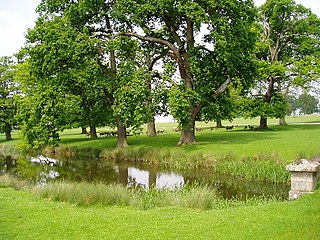
Great Packington, historically known as Packington Magna, is a hamlet, civil parish and country park in the North Warwickshire district of Warwickshire, England. The parish of Meriden is to the south-east, and Little Packington to the west. At Great Packington is Packington estate, which includes Packington Hall, Packington Old Hall and the Greek revival style St James' Church.

Nether Whitacre is a small village and larger rural civil parish in North Warwickshire, Warwickshire, England.
John Wedge was an English agriculturalist.

Offchurch Bury is a manor house one mile north-west of the centre of the village of Offchurch, Warwickshire, England. It is supposed to represent the site of a palace of the Anglo-Saxon King Offa of Mercia (d.796), after which Offchurch is named, "bury" being a corruption of "burh" meaning a fortified place. William Dugdale in his Antiquities of Warwickshire (1656) stated concerning the manor of Offchurch:
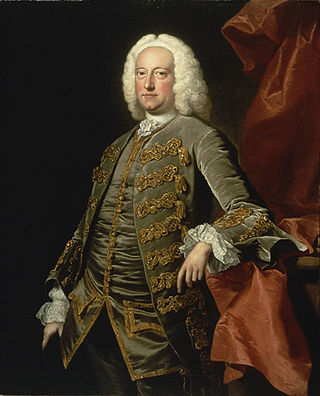
Charles Jennens was an English landowner and patron of the arts. As a friend of Handel, he helped author the libretti of several of his oratorios, most notably Messiah.
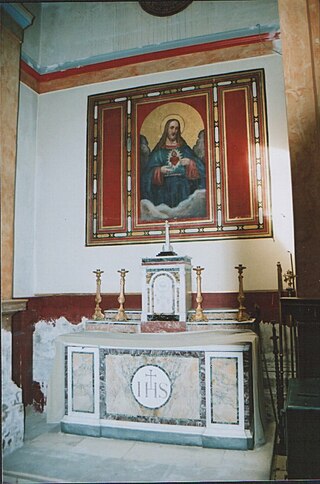
The Chapel of St. Mary the Virgin and St. Everilda, in the village of Everingham in the East Riding of Yorkshire, England, is an impressive Italianate-style Roman Catholic chapel within the Diocese of Middlesbrough. The chapel is owned by the Guest family and is noteworthy as a Grade I listed building, with a fine organ.

The Parish Church of St Peter and St Paul in Witton Lane, Aston, Birmingham, England, is a parish church in the Church of England.
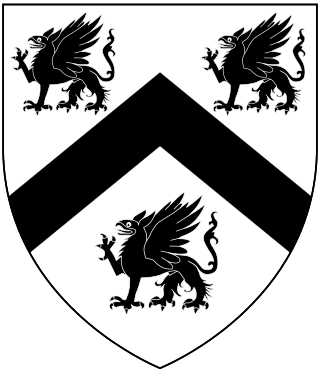
Heneage Finch, 4th Earl of Aylesford, PC, FRS, FSA, styled Lord Guernsey between 1757 and 1777, was a British politician who sat in the House of Commons from 1772 to 1777 when he succeeded to a peerage. He was also a landscape artist.

St Nicholas Church is a Church of England parish church in Kenilworth, Warwickshire, England.
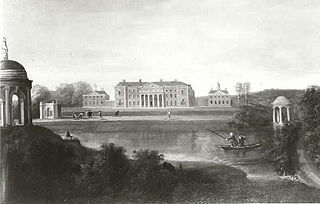
Gopsall is a former civil parish, now in the parish of Twycross, in the Hinckley and Bosworth district, in the county of Leicestershire, England. It is located between the villages of Appleby Magna, Shackerstone, Twycross and Snarestone. In 1931 the parish had a population of 13. Gopsall was formerly an extra-parochial tract, from 1858 Gopsall was a civil parish in its own right, on 1 April 1935 the parish was abolished and merged with Twycross.
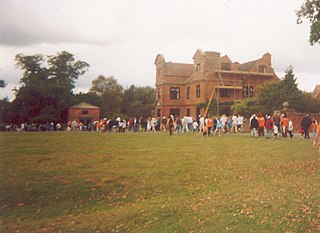
Packington Old Hall is a 17th-century manor house situated at Great Packington, near Meriden, Warwickshire. It is a Grade II listed building. It stands in gardens enclosed by late 17th century brick walls.

Packington Hall is a 17th-century mansion situated at Great Packington, near Meriden in Warwickshire, England and is the seat of the Earl of Aylesford. It is a Grade II listed building.
Colwich is a civil parish and village in Staffordshire, England. It is situated off the A51 road, about 3 miles (5 km) north-west of Rugeley and 7 miles (11 km) south-east of Stafford. It lies principally on the north-east bank of the River Trent, near Wolseley Bridge and just north of The Chase. The parish comprises about 2,862 hectares (28.62 km2) of land in the villages and hamlets of Colwich, Great Haywood, Little Haywood, Moreton, Bishton and Wolseley Bridge.

Heneage Finch, 2nd Earl of Aylesford, styled Lord Guernsey from 1714 to 1719, was an English politician, courtier and peer who sat in the English and British House of Commons from 1704 to 1719, representing the constituencies of Maidstone and Surrey. Born in Albury, Surrey into an aristocratic family, he also served as the Master of the Jewel Office from 1711 to 1716.

St Ambrose's Church is a Roman Catholic parish church in Heathgate Avenue, Speke, Liverpool, Merseyside, England. It is an active parish church in the Archdiocese of Liverpool and the Pastoral Area of Woolton and Halewood. The church is recorded in the National Heritage List for England as a designated Grade II listed building.

St Mary's Watford is a Church of England church in Watford, Hertfordshire, in England. It is an active church situated in the town centre on Watford High Street, approximately 25 kilometres (16 mi) outside London. St Mary's is the parish church of Watford and is part of the Anglican Diocese of St Albans. Thought to be at least 800 years old, the church contains burials of a number of local nobility and some noteworthy monumental sculpture of the Elizabethan and Jacobean eras.
Charles Norris OSB (1909–2004) was a Benedictine monk and dalle de verre stained glass artist who created works for Roman Catholic churches in the UK.
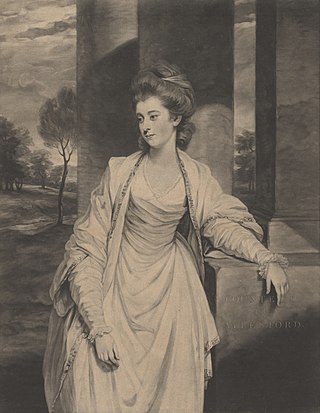
Louisa Finch, Countess of Aylesford was an English naturalist and botanical illustrator who made studies and paintings of the plants, algae, and fungi from the Warwickshire area.


















